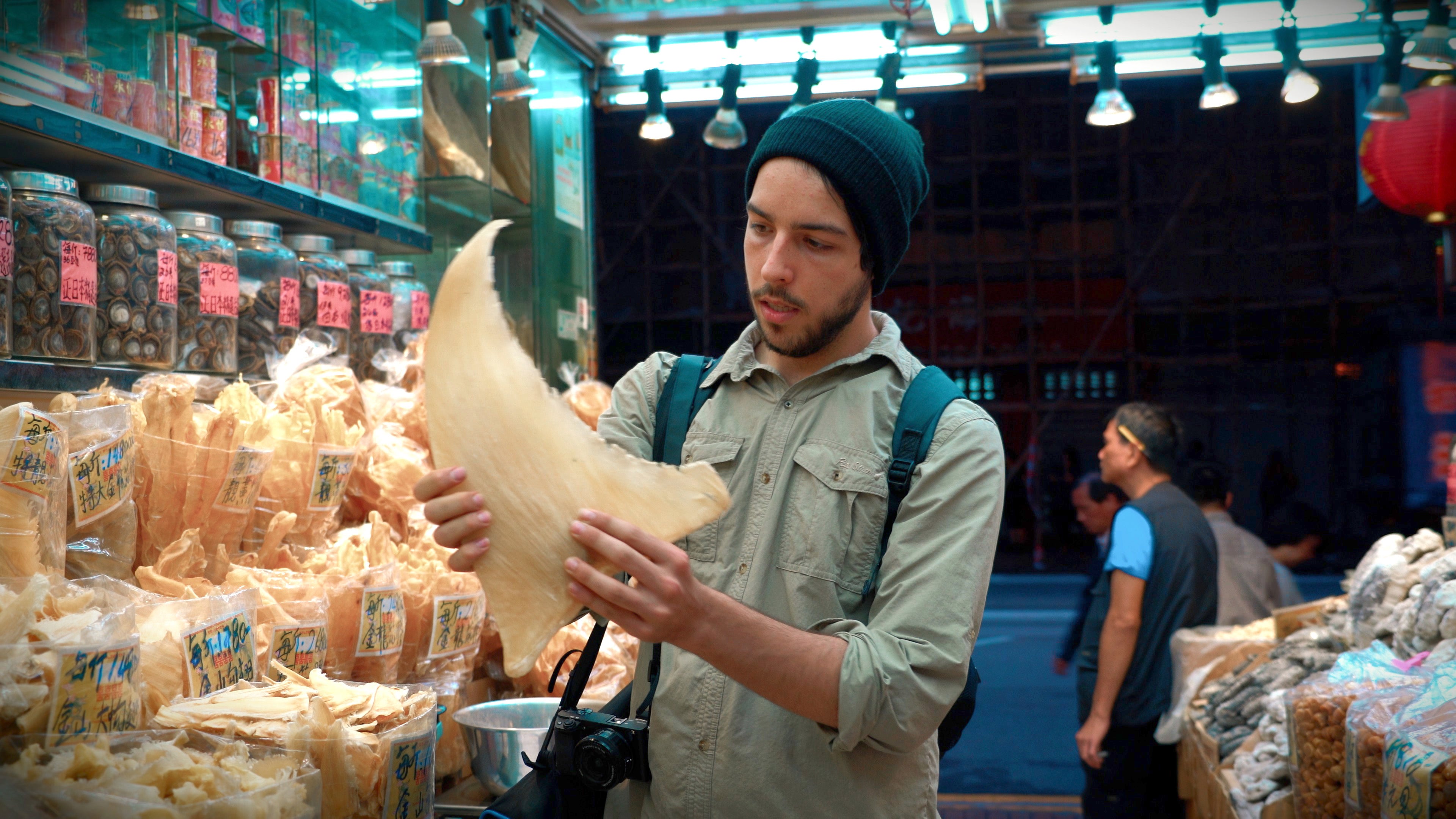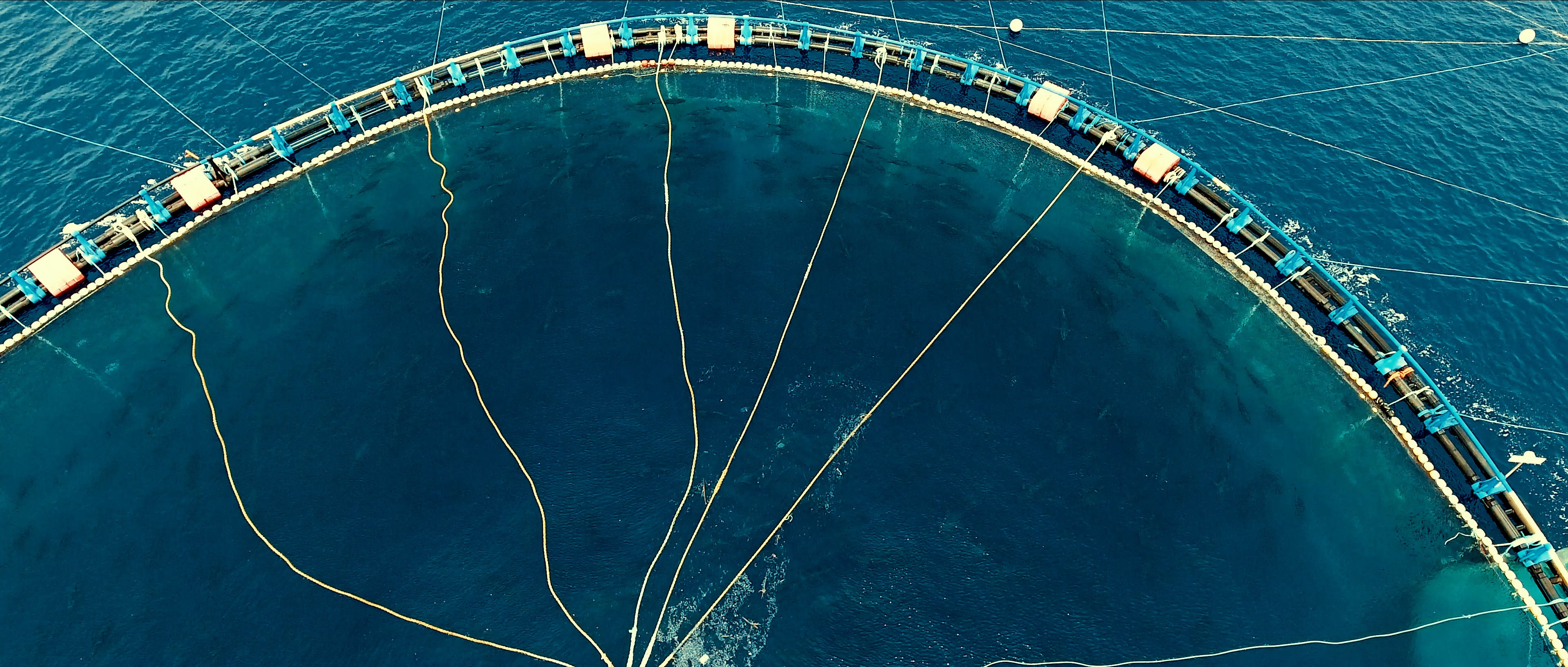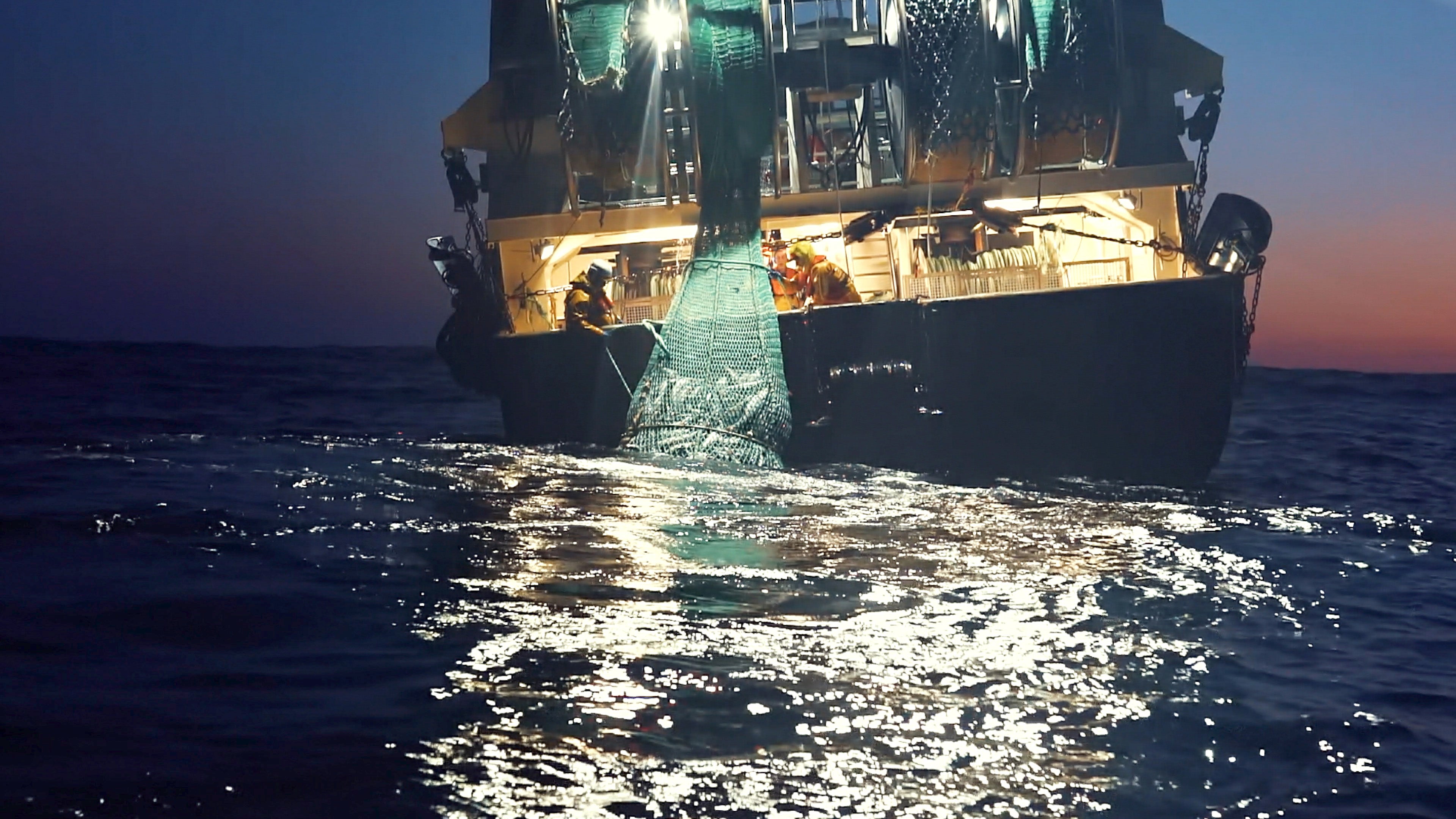Seaspiracy: The 7 biggest claims from the new documentary
As Netflix’s newest sustainability documentary racks up views, Sophie Gallagher looks at the biggest takeaways from the 90-minute film on fishing, marine destruction and modern slavery


Your support helps us to tell the story
From reproductive rights to climate change to Big Tech, The Independent is on the ground when the story is developing. Whether it's investigating the financials of Elon Musk's pro-Trump PAC or producing our latest documentary, 'The A Word', which shines a light on the American women fighting for reproductive rights, we know how important it is to parse out the facts from the messaging.
At such a critical moment in US history, we need reporters on the ground. Your donation allows us to keep sending journalists to speak to both sides of the story.
The Independent is trusted by Americans across the entire political spectrum. And unlike many other quality news outlets, we choose not to lock Americans out of our reporting and analysis with paywalls. We believe quality journalism should be available to everyone, paid for by those who can afford it.
Your support makes all the difference.The internet is home to tens of thousands of documentaries on everything from cat killers to Fyre festival, but some manage to cut through the noise, change the conversation and get people thinking differently. Just as Blackfish did in 2013 on animals in captivity, then Cowspiracy: The Sustainability Secret in 2014 on meat farming, now Netflix presents the 2021 version - Seaspiracy.
From the co-creators of Cowspiracy, this documentary on the fishing industry breaks new ground on the conversation around what it really means for seafood to be sustainable. It examines global fisheries, and shows how while many of us have been distracted by the problems caused by land agriculture, there was another problem brewing in our waters.
Travelling across the world from the Faroe Islands, to Thailand, Japan and Scotland, filmmaker and narrator Ali Tabrizi (and his partner) chart a journey from a childhood love of the ocean to pulling back the curtain on some of the biggest problems it faces, and whether those tasked with caring for it are really the stewards the public believe they are.
Here are the seven biggest lessons The Independent learned from the documentary that will shape the way we see fish forever.
Plastic is a problem for our seas
The documentary opens with all-too-familiar headlines of whales and other sea animals being washed up on beaches, their stomachs filled with plastic. As well as snapshots of highly-publicised campaigns about reducing the amount of plastic humans contribute to the ocean - in particular, cotton buds, straws and plastic bottles.
Read more:
Tabrizi says: “There is a garbage truck load of plastic dumped every minute into the ocean and over 150 billion tonnes of microplastics are already there - they [the microplastics] now outnumber the stars in the milky way.” So far, nothing we don’t already know or haven’t seen in a David Attenborough documentary.
But it is not necessarily the plastic you might imagine
Given the amount of attention given to reducing household or personal plastic use and government campaigns to ban plastic cotton buds, straws and drinks stirrers, it is only fair that the public would see these as the greatest threats to the marine environment.
But Seaspiracy argues that actually one of the biggest plastic deposits are byproducts of commercial fishing, such as nets, claiming 46 per cent of waste in the great pacific garbage patch [a collection of marine debris in the North Pacific Ocean, also known as the Pacific trash vortex] is made up of fishing nets, while plastic straws only account for 0.03 per cent of plastic entering the ocean. And long-line fishing sets down enough lines to wrap around the planet 500 times every day.

Environmentalist George Monbiot says: “Discarded fishing nets are far more dangerous for marine life than our plastic straws because they are designed to kill.”
It also claims that while 1,000 turtles are killed by plastic in the oceans, 250,000 sea turtles are captured, injured or killed by fishing vessels. Professor Calumn Roberts, a marine scientist, claims that the Deepwater Horizon oil spill in 2010 actually “benefited” marine life because “large areas were closed to fishing” giving the oceans a “respite”.
Bycatch is a huge problem caused by fishing
Bycatch is the fish or other mammals unintentionally caught when fishermen are trying to catch a target fish - for example, catching dolphins in nets designed for tuna fishing. Some of this bycatch is killed instantly but even that which is thrown back into the sea, it says is unlikely to survive. The film suggests that as many as 50 million sharks are caught annually as bycatch.
Captain Peter Hammarstedt, from the Sea Shepherd nonprofit conservation society, says: “One of the most shocking things that most people don’t realise is that the greatest threat to whales and dolphins is commercial fishing. Over 300,000 whales and dolphins are killed every single year as a bycatch of industrial fishing.” Sea Shepherd also claims that up to 10,000 dolphins are caught in the Atlantic, off the west coast of France, every year during fishing.
Not only is this problematic in terms of destroying species but also for the climate, because whales and dolphins play a crucial role in fertilising phytoplankton in the sea, which Seaspiracy says absorbs four times as much carbon dioxide as the Amazon rainforest, and generates 85 per cent of all oxygen on earth.

Labels aren’t all they are cracked up to be
If you are reassuring yourself that your seafood consumption is not harming dolphins as bycatch - or any other marine life - because it has the ‘dolphin safe’ label on the tin, or the Marine Stewardship Council labels, then Seaspiracy urges consumers to think again.
Asked whether he could guarantee that every can of fish labelled ‘dolphin safe’ is actually so, Mark J. Palmer of the Earth Island Institute, in charge of the dolphin safe program, says: “No - nobody can [guarantee the product is dolphin safe] - once you’re out there in the ocean. How do you know what they’re doing? We have observers on board but the observers can be bribed and are not out on a regular basis.”
However in a followup statement on their website, Palmer has clarified: “When asked whether we could guarantee that no dolphins were ever killed in any tuna fishery anywhere in the world, I answered that there are no guarantees in life, but that by drastically reducing the number of vessels intentionally chasing and netting dolphins as well as other regulations in place, that the number of dolphins that are killed is very low.
We have observers on board but the observers can be bribed and are not out on a regular basis
“The film took my statement out of context to suggest that there is no oversight and we don’t know whether dolphins are being killed. This is simply not true.
“The bottom line is that the Dolphin Safe label and fishing restrictions save dolphin lives. Yes, commercial fishing is out of control in many cases worldwide. But canned Dolphin Safe tuna is far more protective of dolphins and target fish stocks than the vast majority of other fisheries.”
A spokesperson for the Marine Stewardship Council (MSC) added in defence of its own certification labels: "This certification process is not carried out by the MSC – it is independent of us and carried out by expert assessment bodies. It is an entirely transparent process and NGOs and others have multiple opportunities to provide input. All our assessments can be viewed online at Track a Fishery. Only fisheries that meet the rigorous requirements of our Standard get certified.

“Contrary to what the film-makers say, certification is not an easy process, and some fisheries spend many years improving their practices in order to reach our standard. In fact, our analysis shows that the vast majority of fisheries that carry out pre-assessments against our criteria, do not meet these and need to make significant improvements to gain certification.”
Sustainable is not a defined term in seafood
As well as raising questions over labels such as ‘dolphin safe’ the film also asks whether there is any way that fishing can be sustainable or any type of fish we can eat that is not as bad for the oceans as large-scale commercial fishing. But much of the documentary seems to suggest sustainability is still too much of a grey term to be useful.
María José Cornax is the fisheries campaigns manager for Oceana Europe, a nonprofit ocean conservation organisation, says: “There is not a definition of sustainability as a whole for fisheries...The consumer cannot assess right not properly what fish is sustainable and what is not. The consumer cannot make an informed decision right now.”
There will be practically empty oceans by 2048
Dr Sylvia Alice Earle, an American marine biologist, explorer, author, and lecturer, says; “The estimate is by middle of 21st century if we keep taking wild fish at the level we are today there won’t be enough fish to catch,” predicting virtually empty oceans by by as soon as 2048.
Seaspiracy claims fishing catches up to 2.7 trillion fish per year, or 5,000,000 every single minute, and says that no industry on earth has killed as many mammals. It also highlights the problems generated by fishing methods such as bottom trawling [a method of fishing that involves dragging heavy weighted nets across the sea floor], which it claims wipes out an estimated 3.9 billion acres of sea floor per year.
Farming not the answer
The programme presents the option of farming as an alternative to catching wild fish from the seas. But on a visit to a salmon farm in Scotland, it reveals the problems of breeding in captivity such as illness, lice, and waste production.
It says that each salmon farm produces as much organic waste as 20,000 people and that the Scottish salmon industry produces organic waste equivalent to the entire population of Scotland each year. It also claims that as a result of shrimp and prawn farming, 38 per cent of the world’s mangrove forests have been destroyed.

Slavery at sea is a massive problem
George Monbiot makes the comparison to “blood diamonds” when talking about the human impact of fisheries on the labour market, saying that slavery is still used on boats.
The documentary makes a comparison between the number of American soldiers that died during five years of the Iraq War - 4,500 - to the reported 360,000 deaths of fish workers during the same period. Captain Hammarstedt from Sea Shepherd says: “[It is] the same criminal groups behind drug trafficking and human trafficking.”
Former fishermen are interviewed at a safehouse in Thailand and claim that they were kept on boats for years - one says he was at sea for a decade - living in squalid conditions, facing death threats and being held at gunpoint. One claimed the ship’s captain kept dead bodies of other sailors in the freezer on board.
As well as human misery in the form of slavery - the documentary also makes the connection between the destruction of local fishing communities and people in poor communities being driven to subsistence on the land, eating more bush meat and land mammals, where fish is in short supply. The documentary makes the link between this increase and the outbreak of Ebola in west Africa.

The best thing you can do is stop eating fish
Although the documentary does explore different options - such as eating more sustainable fish or only fish from farms rather than from the wild - it concludes that the “best thing to do for marine ecosystems is not eat fish” at all. It also says that there should be established “no take zones” for fishing around the world in order to preserve underwater habitats.
It says that long-held beliefs that fish do not feel pain or are not intelligent enough to be fearful is unfounded, and that other reasons to avoid fish include the heavy contamination of industrial pollutants - including mercury, heavy metals and dioxins.
As far as Seaspiracy is concerned, fish should be off the menu altogether.
But MSC says: “Sustainable fishing does exist and helps protect our oceans…One of the amazing things about our oceans is that fish stocks can recover and replenish if they are managed carefully for the long-term.
“While we disagree with much of what the Seaspiracy documentary-makers say, one thing we do agree with is that there is a crisis of overfishing in our oceans. However, millions around the world rely on seafood for their protein needs. With the global population set to reach 10 billion by 2050, the need to harness our natural resources more responsibly is more urgent than ever. Sustainable fishing has a vital role to play in securing those resources.”
Join our commenting forum
Join thought-provoking conversations, follow other Independent readers and see their replies
Comments